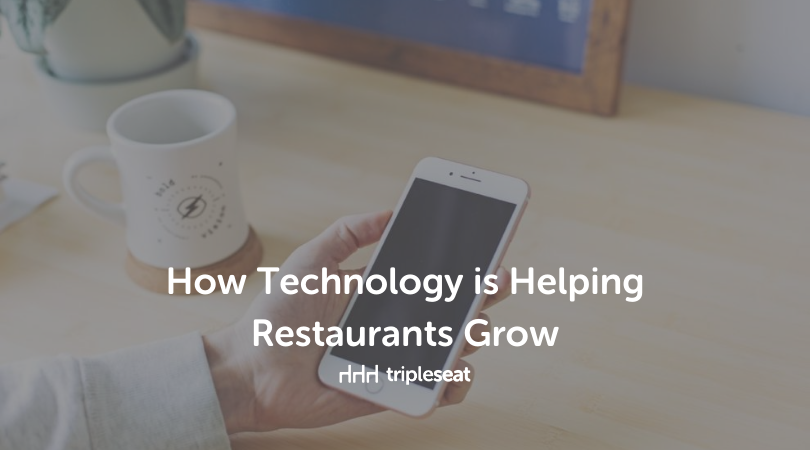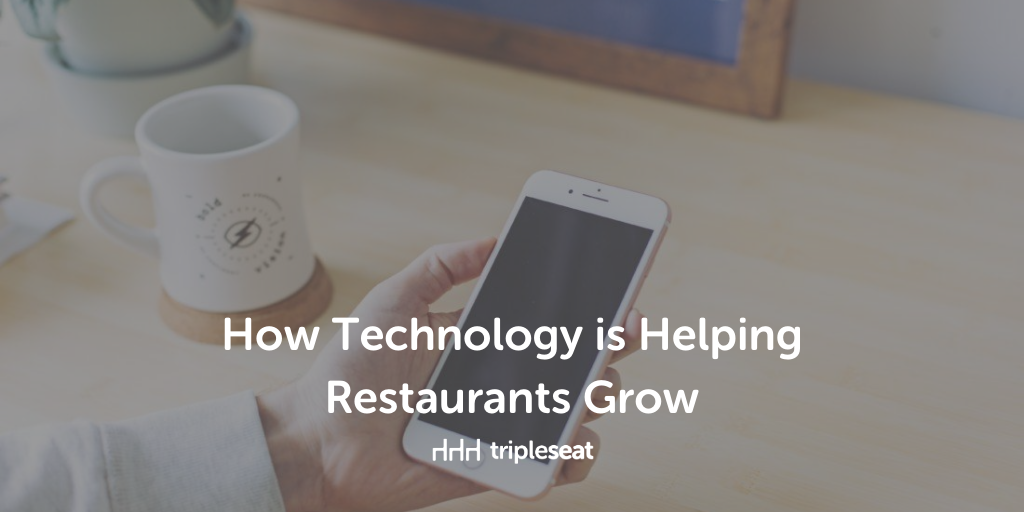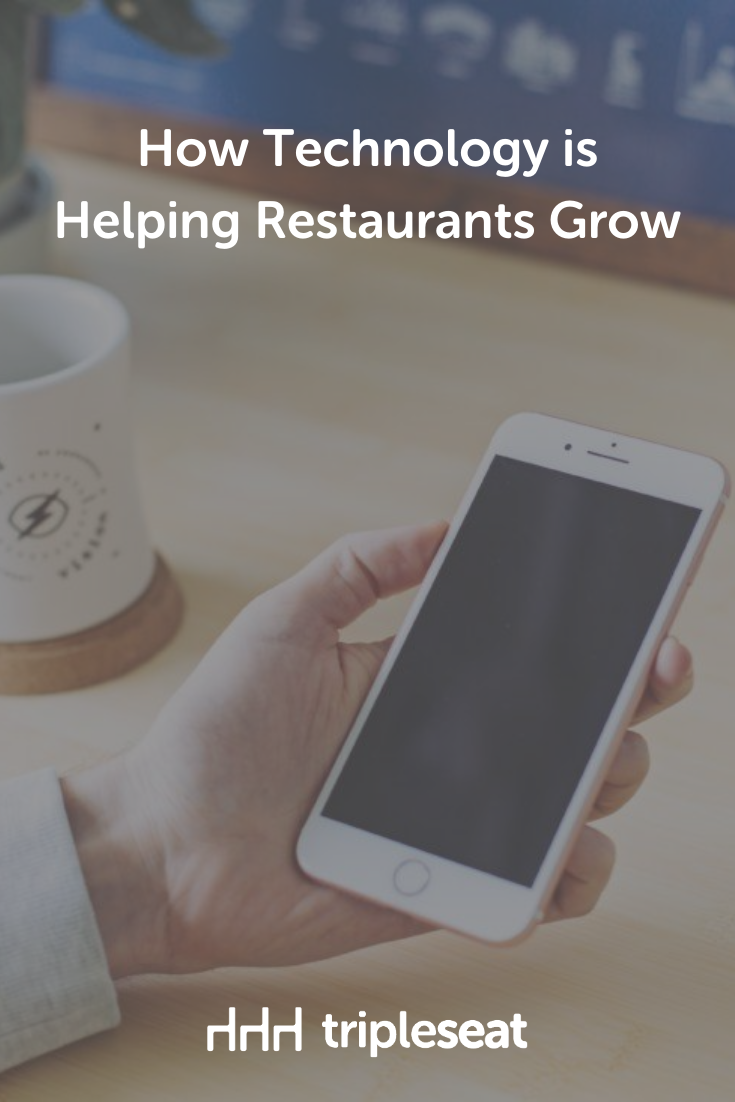How Technology is Helping Restaurants Grow

Technology is designed to make life easier. It’s designed to simplify our personal lives and our work lives. This simplification is particularly the case in the restaurant industry. Today’s technology buzzwords — things like mobile apps, artificial intelligence, analytics, smart devices, and the like — have turned their gaze to the restaurant industry.
And they’ve already had a significant impact on the early adopters of some of these tech tools.
This comes as no surprise. Technology has always had a strong, positive impact on the restaurant industry. The combination just makes sense. Restaurants want to deliver a flawless, convenient, and enjoyable experience to their customers. Technology offers a means to speed up processes and improve the customer experience. Thereby achieving the goals of the restaurant.
We’ll take a look at some popular restaurant tech tools to hit the industry and how they’re helping these establishments improve their functions and create a better overall dining experience for customers.
Online and mobile ordering
Online food ordering is not a new technology, but how orders are ordered, paid for, delivered, and picked up are evolving. Domino’s has changed the online ordering game over the last couple of years. Particularly, they were one of the earliest pizza chains to realize the advantage of customers placing online orders over calling in. There are fewer opportunities for errors to occur because of miscommunication, staff members don’t have to stop what they’re doing to answer a phone, and it’s easier to upsell through an online portal because there are pictures of the items, which makes the offer more enticing to the eater. By focusing on its online ordering platform, Domino’s has managed to make the majority of its food orders come through digital channels.
Tripleseat+ Direct enables restaurants to offer a seamless way for customers to order catering and book events online. Restaurants share their Tripleseat+ Direct lead form on their website, social media, email messages, and anywhere else they do marketing, and customers can book from there. Through the lead form, customers can book catering orders or events and pay for their bookings in a few easy steps. On the restaurant side, the venue has total control over every detail, can personalize the lead form for catering and events options, and can decide to accept or reject bookings.
Mobile apps have also aided this evolution and boom in digitally-placed orders. A restaurant’s branded app is a convenient channel for a customer to order. The app is already on the phone; their account is linked to the reward program (if there is one), which means it’s easy to apply points or savings, and many apps even save previous orders, thereby making it faster for the customer to place their order and get it delivered. There are also other non-branded apps and services that have helped restaurants process orders and connect people and food.
As more and more restaurants realize the benefits of handling orders digitally and building online and mobile ordering platforms, this convenience is only going to become an expectation held by a vast majority of diners. You may not have envisioned your restaurant as a delivery or takeout joint, but as this hope grows, you may have to leverage a service to adapt to these ever-changing consumer attitudes.
Branded mobile apps
This is the big kahuna when it comes to restaurant tech. Every restaurant tech in the digital age is, in some way, impacted or improved by the introduction of a branded mobile app. The reason that branded restaurant apps are so impactful on the restaurant industry (and in many, if not all, other customer-facing industries) is that they can do so much and provide a ton of benefits to both customers and restaurant owners. No matter what type of dining establishment you have (fine dining, food truck, pop-up restaurant, fast food) there’s an app-based function that would serve your restaurant and its objectives.
Mobile apps offer the opportunity for a restaurant to:
- Better target potential diners with location-based push notifications and coupons/offers
- Improve client retention and diner frequency with app-based loyalty programs
- A new, convenient channel for customers to place online orders for pickup or delivery
- New payment options that allow customers to pay with their mobile device instead of their wallet
- Reserve a table without having to place a call
- Much more
We’ve only just begun to scratch the surface of what mobile is capable of. What we do know is that it is no longer the next “trend” to watch out for, like it may have been perceived a few short years ago. Mobile apps are a definite necessity for restaurants and businesses that are customer-facing.
Restaurant establishments like Starbucks, Domino’s Pizza, Taco Bell, and Buffalo Wild Wings provide prime examples of how you can deliver a mobile experience that rocks the customer experience. It’s all about providing value to customers where there previously was none (or very little) and enhancing your existing experience/atmosphere.
For Starbucks, this meant creating an app that made it easier for customers to order food online, pick that order up and pay for it as fast as possible, to aid in the chaotic morning commute. Now, they handle almost a third of all transactions through their mobile app. Another example: Buffalo Wild Wings created a “Fight for Fandom” game, as part of their mobile experience, which uses the person’s location to connect them with other diners and place them on the local leaderboard. Then, patrons can compete with one another to claim that restaurant location in the name of their favorite sports team. This kind of friendly competition is an excellent example of how to make your mobile app an extension of your real-life dining experience.
Social media analytics
Loyal diners return to a restaurant for two primary reasons: the food and the staff. People like to eat in familiar places where they feel welcomed and can experience that hometown sense of belonging. This isn’t an easy-to-achieve feeling because everyone has their own unique understanding or desire of what they want to feel or how they like to interact with a restaurant’s staff. While some diners may like the talkative bartender who shares her personal anecdotes, others prefer the quiet corner booth. The more you can learn about customers’ behaviors and how they interact with your brand or restaurant, the better you can strengthen the customer relationship and help cultivate more hyper-loyal eaters. Then, it’s up to your food to do the talking.
Social media and mobile apps produce a lot of data, and a healthy portion of that information is about your customers, which you can leverage to learn more about them and their relationship with your restaurant. When someone tags your restaurant, places an online order, or accesses your mobile app, it all produces clues and insights into who they are, what menu items they like most, what days of the week they visit, how they feel about your restaurant, and everything in between.
The majority of restaurants are present on social media and even reply to comments and interactions on such channels (Facebook, Instagram, Twitter, etc.). Responding to social media engagement is a great way to foster an appreciation for your brand, but you don’t create any deep understanding of your brand and how it performs against competitors. In other words, it’s important to address individual customer comments, especially negative ones. If you’re a restaurant that receives a lot of engagements or interactions, it can be challenging to understand the majority voice and get a feel for where improvements can be made.
Today’s self-service analytics tools allow a business to take all of the mentions from social media and data from other sources and make sense of it all. While you may feel you have a good understanding of how your customers feel, do you know exactly how many times they’ve positively mentioned your drink selection? How about how many times they had something negative to say? Which day of the week creates the most amount of positive feedback? What menu item receives the most accolades (which isn’t always your top-selling item)? Analytics can open the door to these insights and much, much more. Your customers are talking, and you want to listen.
Adopting technology helps your customers and your bottom line
Mastering restaurant tech in the digital age is all about delivering the best convenience and value to your customers. What makes the Starbucks app so successful? Why do people love Domino’s online ordering platform? What makes Little Caesars’ new vending machine pickup system, where customers order on their phone and pick up their order without needing to interact with a Little Caesars employee, a customer favorite? Simple, they work flawlessly to meet and exceed the expectations and desires of their unique customers. Starbucks knows people are in a morning rush, and long lines are a detriment to their ability to make it to work on time, so their hugely efficient mobile ordering system speeds up the checkout process.
Succeeding with a branded restaurant mobile app or even an online ordering platform means you have to understand how these restaurant tech tools can be used to enhance your existing customer experience, not change it completely. In other words, how can these tools be used to make your dining experience more engaging and valuable to the customer? If you aren’t sure how to answer or where to begin, you may need to delve into your social media analytics to learn how to apply this technology to your restaurant.
Once you master the basics, focus on event management software
Restaurants, hotels, and unique venues that rely on event management technology see huge benefits from its time-saving features, and their event clients find the software’s communication and organization tools to be easy to use. Event management technology is the best way to streamline your event planning, increase bookings, grow revenue, and put your venue ahead of the competition. In fact, Tripleseat customers report more than a 50% increase in their event sales.
If you’re not a Tripleseat customer and you’re interested in learning more about Tripleseat’s features, schedule a demo at your convenience to take a closer look.



